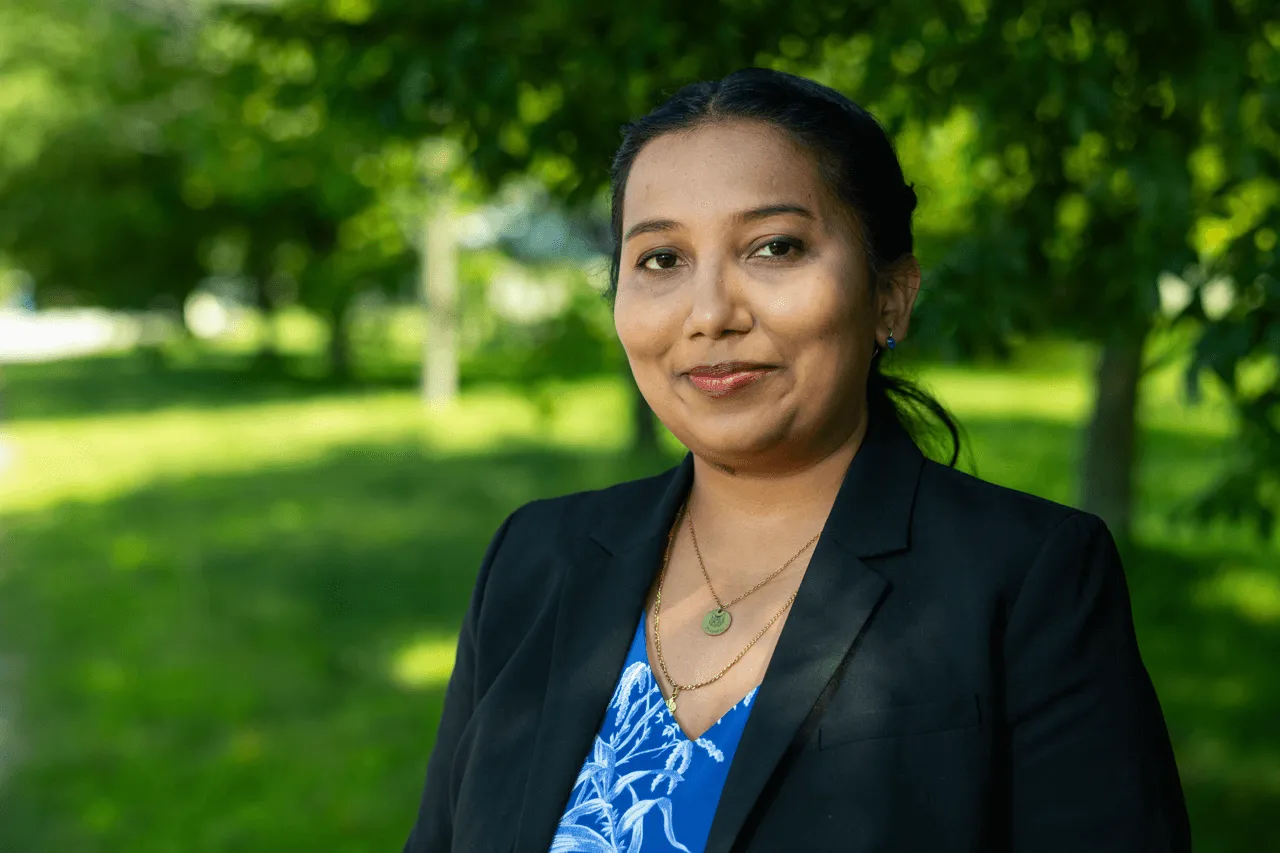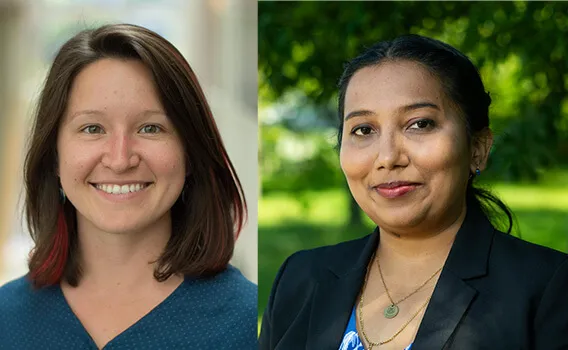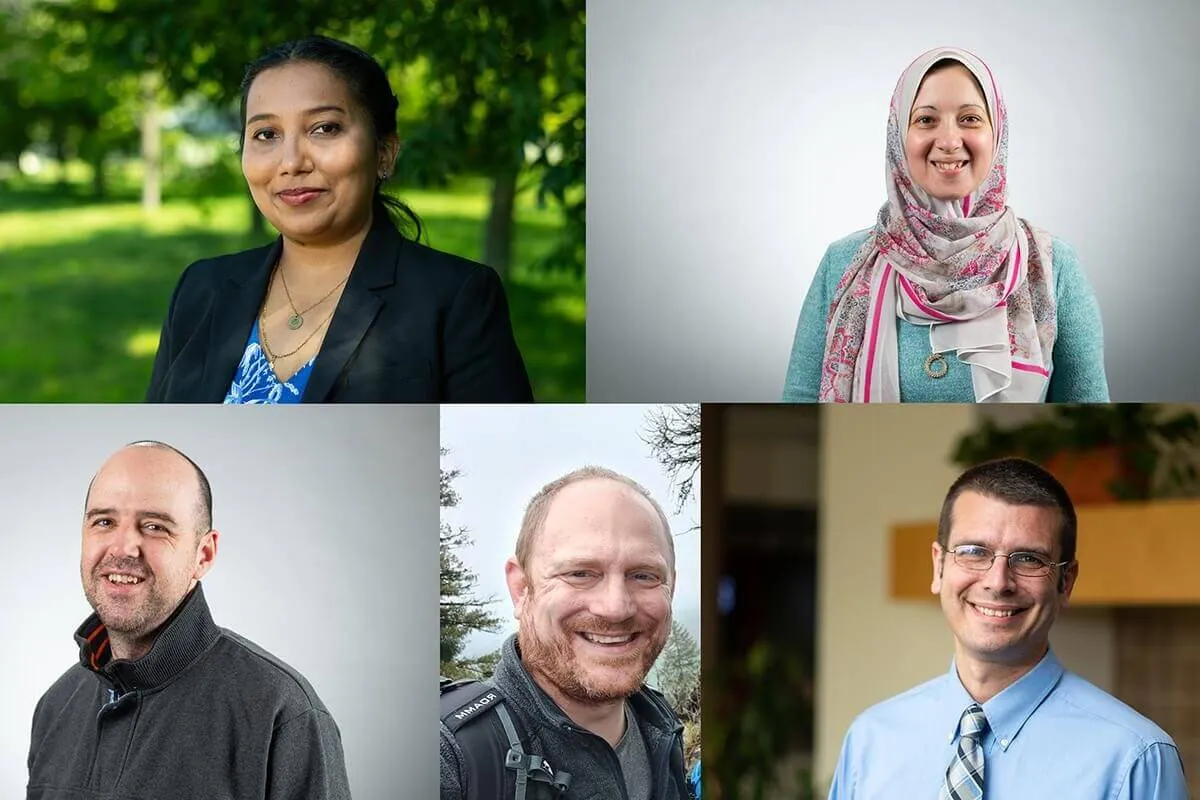Bhurosy’s Study Reveals Food Insecurity Among Young Adult Cancer Survivors
Cancer survivors often face an array of unique challenges. For some, that includes a heightened risk of food insecurity.
To further understand these outcomes, UVM Cancer Center member (Population Sciences and Cancer Outcomes Program) Trishnee Bhurosy, MSc., Ph.D., CHES, and an assistant professor at UVM College of Agriculture and Life Sciences, led a study to examine the prevalence and correlates of food insecurity in a national sample of survivors of cancer, post COVID-19 pandemic.
We talked with Dr. Bhurosy about the results of this study, which was published in Cancer Causes & Control, as well as recommendations for targeted interventions.
Q1: What inspired you to develop this study, and what question(s) were you hoping to answer?
My inspiration for this study came from both personal and professional experiences. I have experienced food insecurity firsthand and have worked closely with college students facing similar challenges, particularly through leading a campus food pantry. These experiences have shaped my research focus and fueled my commitment to exploring the broader impacts of food insecurity in vulnerable populations.
For this study, I was specifically interested in understanding food insecurity among cancer survivors in the United States, especially because the pandemic widened a lot of existing disparities in different communities. I wanted to answer two main questions: What are the rates of food insecurity among cancer survivors, and are there particular subgroups within this population that are especially at risk?
Q2: Talk about your methodology. Where did your data come from, and how broad was the sample size in terms of types of cancer, demographics, etc.?
This study used data from the Health Information National Trends Survey (HINTS), which is a nationally representative survey administered by the National Cancer Institute. HINTS collects information from the American public on their knowledge, attitudes, and behaviors related to health and cancer information.
From the HINTS dataset, I identified approximately 840 eligible participants who were individuals aged 18 and older and reported a cancer diagnosis. Because HINTS is nationally representative, the sample includes a broad range of cancer types as well as diverse demographic groups in terms of age, race/ethnicity, gender, income, and education levels. This allowed for a more comprehensive look at food insecurity within the cancer survivor population across different subgroups.
Q3: Can you define “food insecurity”? What might the impact(s) of food insecurity look for a cancer survivor?
Food insecurity happens when one cannot access the food they need to live their fullest lives. There are many definitions out there. One that I like to use is the one by the United States Department of Agriculture: “the limited or uncertain availability of nutritionally adequate and safe foods or limited or uncertain ability to acquire acceptable foods in socially acceptable ways.”
While food insecurity is challenging for anyone, food insecurity can be particularly complicated for a cancer survivor because of several reasons.
Survivors of cancer face unique barriers such as high costs of cancer treatment, which can quickly deplete personal savings and lead to financial strain, even for those with insurance.
Treatment side effects, such as nausea, fatigue, or changes in taste, can also limit their ability to prepare or consume food, further complicating their nutritional needs.
Many survivors experience a lack of social support and accessible information about available food assistance programs, especially those tailored to meet the dietary needs of cancer survivors.
Q4: Your study revealed a critical issue, which is that “survivors of cancer who reported poor communication with their healthcare providers during the past 12 months were significantly more likely to experience food insecurity.” What kinds of interventions do you think might address this correlation between poor communication and food insecurity?
This is an important finding. It aligns with some of my earlier work that pointed to the role of healthcare communication in shaping cancer patients’ access to nutritional advice. In one of my previous studies, I found that more than 80% of patients with cancer did not receive any nutritional advice. To me, it starts with more awareness among healthcare providers about how food insecurity can impact treatment outcomes and survivorship. We need to build care systems and programs that give providers the training, resources, and time to have conversations with patients about nutrition and food access.
Another key strategy is building stronger partnerships between healthcare systems and community-based resources, such as food pantries, social services, and nonprofit organizations so that healthcare providers can refer their patients to appropriate resources.
Q5: As you analyzed the data, were there any points that surprised you, and if so, what were they?
One data point that I was really surprised about was that younger survivors of cancer were about 50 times more likely to skip meals or cut the size of their meals compared to older survivors. While I had an idea that food insecurity rates are high among young people, I was shocked by how much young survivors are affected by this issue.
Q6: What’s next for you? How do you hope to build on the results of this study?
One of my long-term goals is to generate evidence on best strategies, practices, and policies to improve nutrition assistance to survivors of cancer. I am currently working on a few projects that focus on understanding the perspectives of young cancer survivors—a group that, as this research shows, is especially vulnerable to food insecurity. These projects aim to explore what young survivors need in a nutrition assistance program, how they prefer to access services, and what barriers may prevent them from using existing resources. This work will be critical to designing interventions that are not only evidence-based but informed through the lived experiences of cancer survivors.
Recipe
Looking for a nutritious cancer recipe? Try plant-protein powered “Pistachio Crumble Tacos with Avocado Lime Crema”, developed by the American Institute for Cancer Research. For a more affordable version, substitute pistachios with peanuts (same amount), which have even more protein; or about a cup of fresh seasonal or frozen vegetables. Low sodium chickpeas are also a cheap, protein-packed option: a whole, 14-oz can should be plenty.



